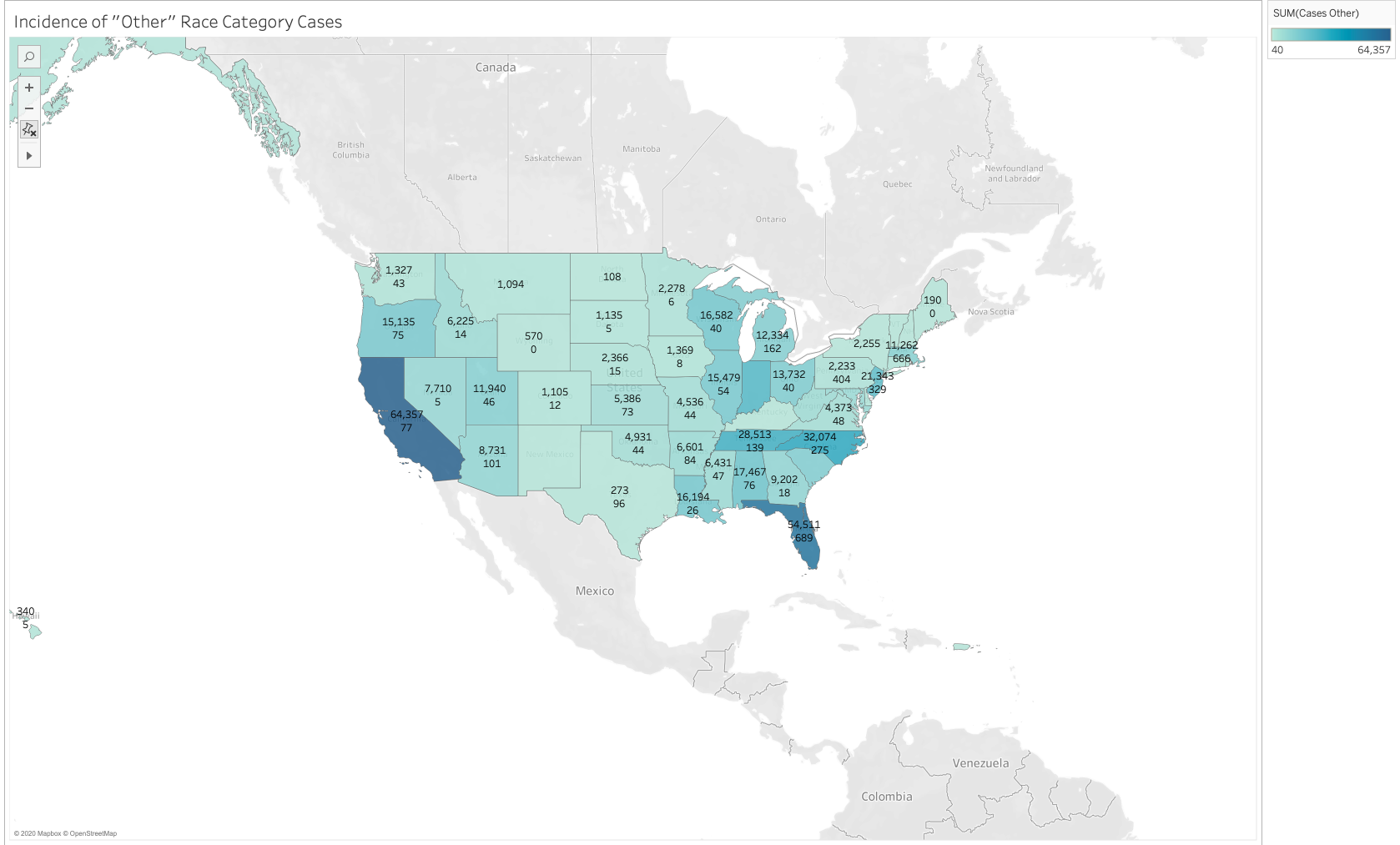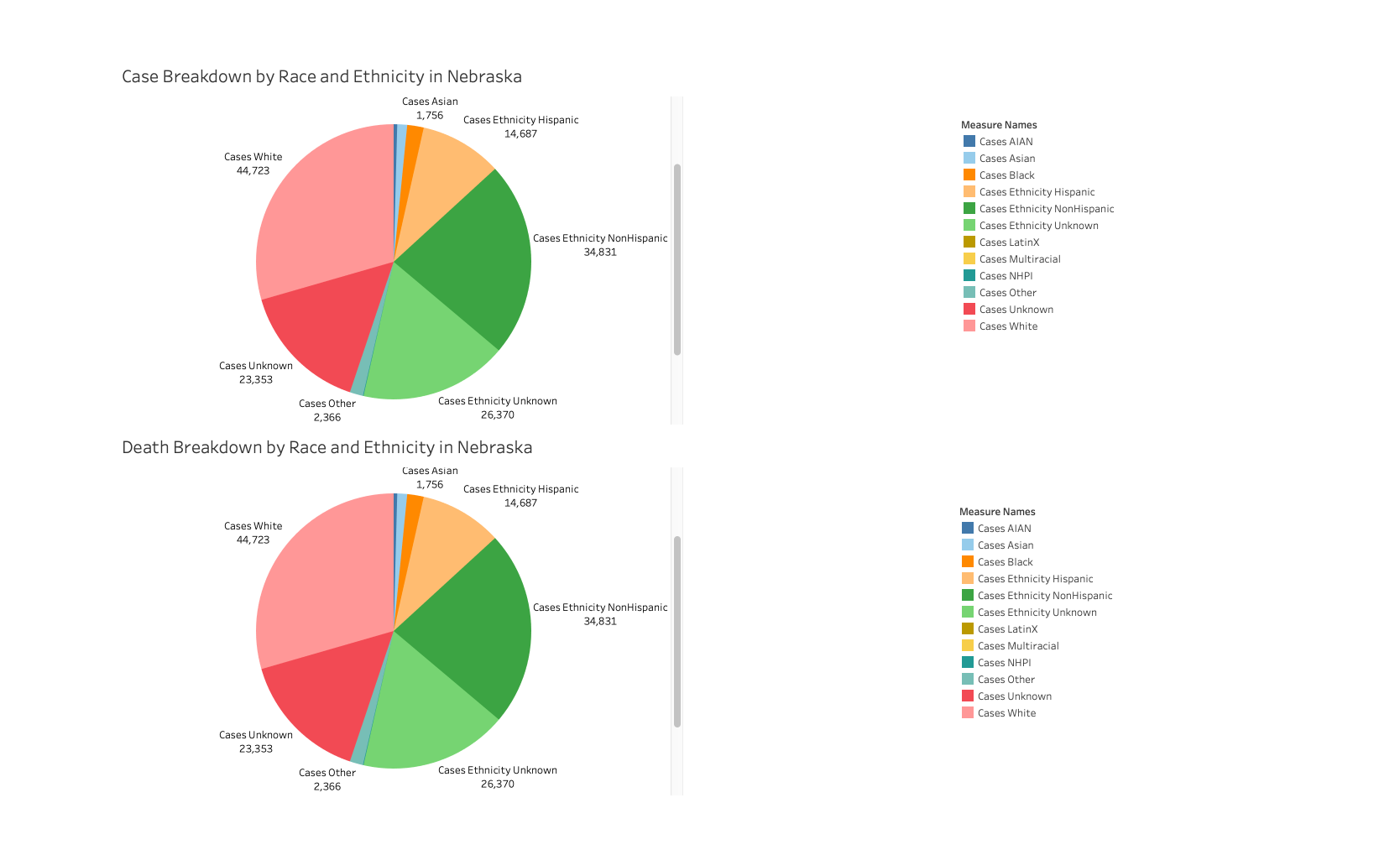This graph shows the percentage growth of cases by race over time. While positive cases in Latinx communities were always higher than white communities, the Latinx percentage drastically increased in the summer months between July and September. Along with the second wave, positive cases for Latinx people are at an all time high, at 239,889 recorded cases.
For a story, I would like to investigate why there was such a drastic increase in the summer months, and why it is at an all time high as of this month. Also, since in this election year, the state of Nevada sparked quite a controversy, as it was slow to count votes. When looking at a map of counties, most counties voted red. What turned Nevada blue was its smaller, yet more populated blue counties. Many Latinx communities live and work in these counties. I would love to do a comparison of each county’s votes compared to how they were hit by COVID-19, to see if the virus influenced or did not influence their votes.

